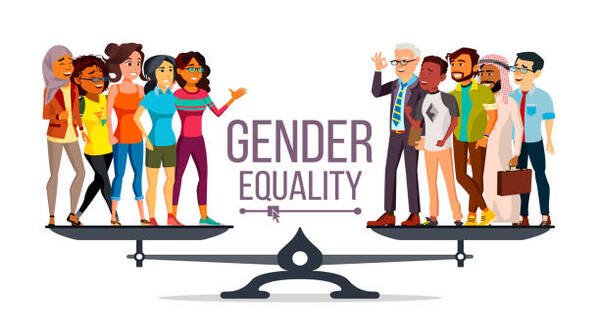The Role of Education in Promoting Gender Equality and Awareness
Introduction
Education plays a pivotal role in promoting gender equality and raising awareness about gender issues. By incorporating gender equality into educational frameworks, we can challenge stereotypes, empower individuals, and foster a more equitable society. This article explores the critical role of education in advancing gender equality and offers strategies for integrating gender-focused content into educational settings.
The Impact of Education on Gender Equality
Challenging Stereotypes
Education is a powerful tool for challenging and changing gender stereotypes:
- Curriculum Content: Inclusive curricula that reflect diverse perspectives can help dismantle traditional gender norms.
- Critical Thinking: Encouraging critical thinking about gender issues helps students question and address stereotypes.
Case Example: Gender-Inclusive Curricula
Schools that integrate gender studies into their curricula promote understanding and respect for all genders, reducing bias and stereotypes.
Empowering Future Generations
Education empowers individuals by providing the knowledge and skills necessary for achieving gender equality:
- Access to Resources: Education provides access to resources and opportunities that support equal participation in various fields.
- Leadership Skills: Developing leadership skills through education prepares individuals to advocate for gender equality and drive change.
Case Example: Leadership Development Programs
Educational programs focused on leadership and advocacy help students develop the skills needed to promote gender equality in their communities.
Strategies for Integrating Gender Equality in Education
Developing Inclusive Curricula
Gender-Responsive Curriculum
Creating gender-responsive curricula involves:
- Diverse Perspectives: Include materials that represent a range of gender experiences and roles.
- Challenging Norms: Address and challenge traditional gender norms and stereotypes within lesson plans.
Case Example: Gender-Focused Textbooks
Textbooks and learning materials that present gender issues and diverse role models contribute to a more inclusive educational experience.
Training Educators
Professional Development
Training educators on gender equality is crucial for effective implementation:
- Bias Training: Provide training to help teachers recognize and address unconscious biases.
- Gender Sensitivity: Educators should receive training on gender sensitivity and inclusive teaching practices.
Case Example: Teacher Training Programs
Programs that offer professional development in gender sensitivity help educators create a more inclusive classroom environment.
Promoting Gender Equality in School Policies
Inclusive School Policies
Developing and implementing inclusive school policies supports gender equality:
- Anti-Discrimination Policies: Enforce policies that prevent discrimination based on gender.
- Support Services: Provide support services for students affected by gender-based issues.
Case Example: Gender Equity Policies
Schools with comprehensive anti-discrimination and support policies create a more equitable environment for all students.
Raising Awareness Through Education
Community Engagement
Education extends beyond the classroom to involve the wider community:
- Parent and Community Programs: Offer programs that educate parents and community members about gender equality issues.
- Public Awareness Campaigns: Use educational institutions as platforms for public awareness campaigns on gender issues.
Case Example: Community Workshops
Workshops and seminars for parents and community members raise awareness and foster a broader understanding of gender equality.

Encouraging Student Advocacy
Empowering Students
Encouraging students to become advocates for gender equality enhances their learning experience:
- Student Organizations: Support student-led organizations and initiatives focused on gender equality.
- Advocacy Projects: Encourage students to participate in projects that address gender issues in their communities.
Case Example: Student Advocacy Initiatives
Student-led advocacy initiatives and projects promote active engagement and leadership in gender equality efforts.
Measuring Progress and Impact
Tracking Educational Outcomes
Assessing the impact of gender-focused education involves:
- Data Collection: Collect data on student outcomes related to gender equality education.
- Program Evaluation: Evaluate the effectiveness of gender equality programs and curricula.
Continuous Improvement
Ongoing evaluation and refinement of educational strategies are essential:
- Feedback Mechanisms: Use feedback from students, educators, and stakeholders to improve gender equality initiatives.
- Adaptation: Continuously adapt educational programs to address emerging issues and challenges.
Conclusion
Education is a crucial driver of gender equality and awareness. By integrating gender-focused content into curricula, training educators, and developing inclusive policies, we can create a more equitable learning environment. Raising awareness through community engagement and student advocacy further supports gender equality efforts. Measuring progress and ensuring continuous improvement are key to achieving lasting impact in promoting gender equality through education.



